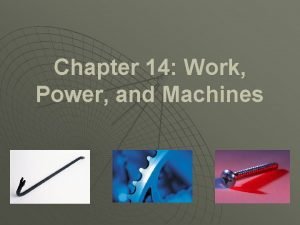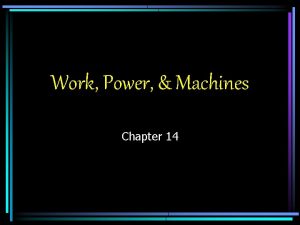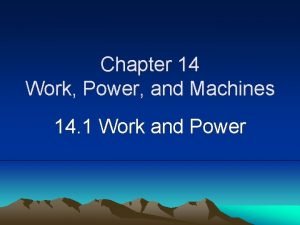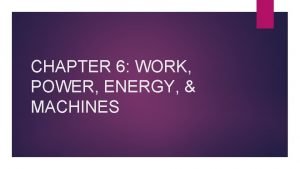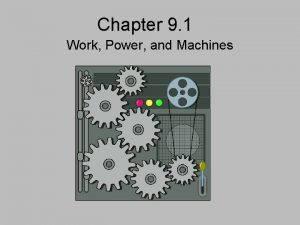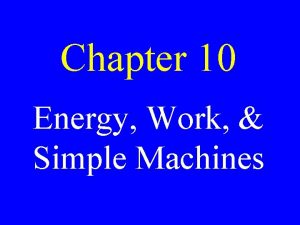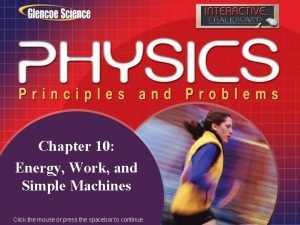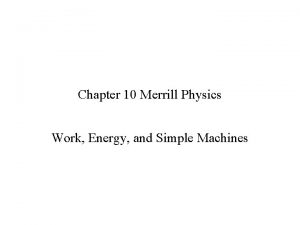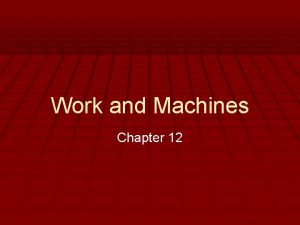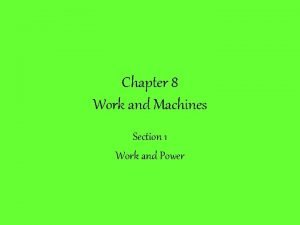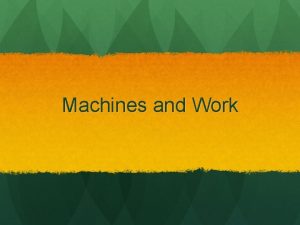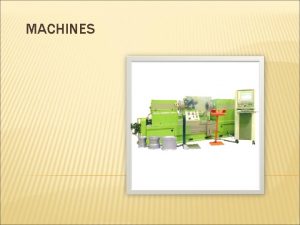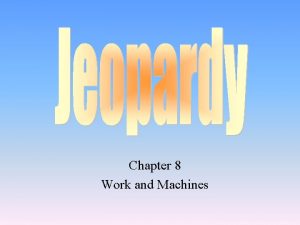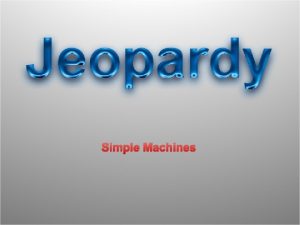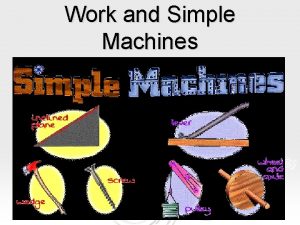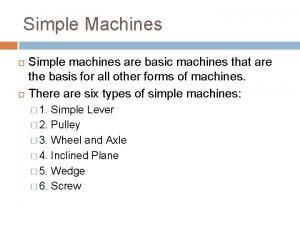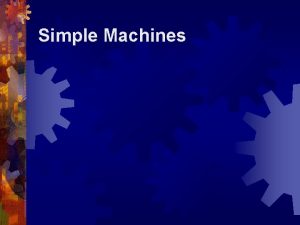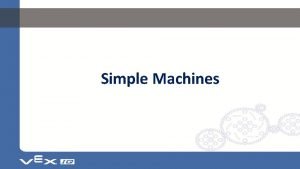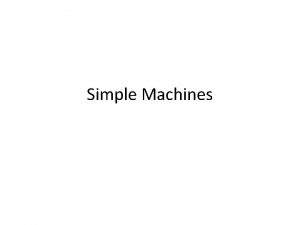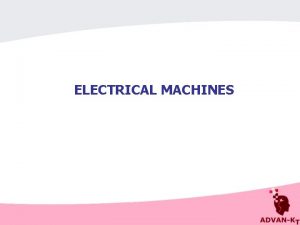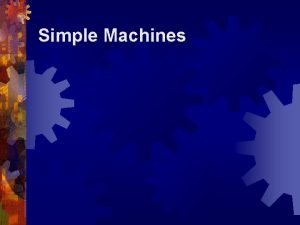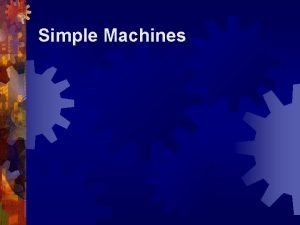Chapter 9 1 Work Power and Machines Work















- Slides: 15

Chapter 9. 1 Work, Power, and Machines

Work is defined as a quantity that measures the effects of a force acting over a distance – if nothing gets moved from one place to another, there is NO WORK DONE!

Work Equation W=F X d Work = force x distance Units: Force = Newtons Distance = meters, kilometers Work – Joules


Power is calculated • Power = work/time • • P = __W___ T • and is measured in watts (W) • make sure it’s a capital “W”


What is a JOULE? • Just like Newton means kg m/s 2 • Joule means the same as 1 N–M • (1 Newton-Meter) meaning the amount of work done lifting something with a weight of 1 Newton through a distance of 1 meter.

Power • defined: quantity that measures the rate at which work is done. • i. e. , (how fast!) • If we both do the same work, but you do it faster, you are more “powerful”

Mechanical Advantage • Simply put, it’s how much help we get from the machine. • How much the machine “multiplies” our • efforts. • Or how much it increases our distance. • (think about how little your wrist moves when bat, and how wide the other end of the bat swings through the air.

Mechanical Advantage Equation • either • output force • input force or • INPUT is what you do • OUTPUT is the work that gets done, • thanks to the machine’s help! input distance output distance


Example Problem: A crate of bananas weighing 3000 N is lifted using a pulley. If 500 N of force is applied (the effort force), what is the mechanical advantage of the pulley? M. A. (mechanical advantage) = Force out / Force in So, M. A. = 3000 N / 500 N = 6 This means that the force needed to lift the crate is reduced by 6 times the weight of the crate.

Example : A screwdriver is used to open a can of paint. The distance that the arm is moved downward is 4 cm, while the lid moves 0. 5 cm before popping open. M. A. = distance in / distance out M. A. = 4 cm /. 5 cm = 8

The Inclined Plane (Ramp or screw) - reduces the effort force needed by increasing the distance through which the force is applied. 10 m 2 m The ideal mechanical advantage is equal to the length of the run divided by the height of the rise. M. A. = 10 m / 2 m = 5

Another way to calculate the mechanical advantage: M. A. = Force out / Force in Example: A 3500 N piano is moved up a small fight of stairs by using a ramp. If the piano movers only push with a force of 500 N, what is the mechanical advantage? M. A. = 3500 N / 500 N = 7
 Chapter 4 section 1 work and machines answer key
Chapter 4 section 1 work and machines answer key Chapter 14 work power and machines
Chapter 14 work power and machines Chapter 14 work power and machines
Chapter 14 work power and machines Work power and machines
Work power and machines Work power energy and machines
Work power energy and machines A crate of bananas weighing 3000 n
A crate of bananas weighing 3000 n Ma=fr/fe
Ma=fr/fe Chapter 10 energy, work and simple machines answer key
Chapter 10 energy, work and simple machines answer key Energy work and simple machines chapter 10 answers
Energy work and simple machines chapter 10 answers Physics 10
Physics 10 Power traiangle
Power traiangle Compound machine
Compound machine Section 1 work and machines
Section 1 work and machines Section 2 describing energy
Section 2 describing energy What is a power machines throw
What is a power machines throw Power machines game
Power machines game

